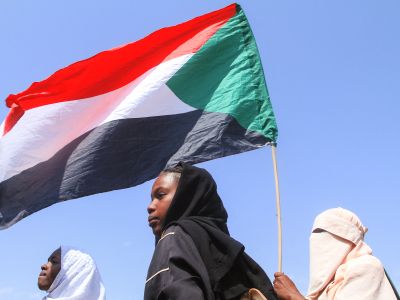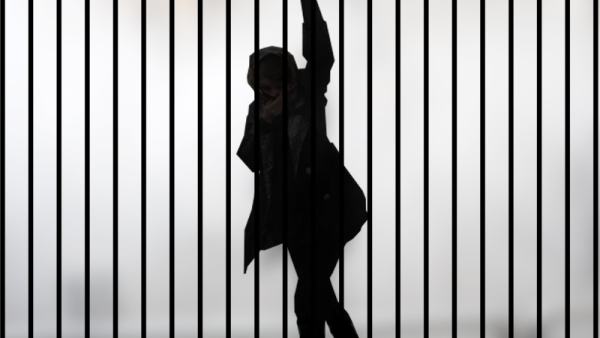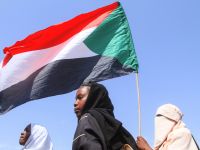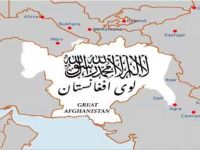- Protests that once swept Iran have been stamped out
- Those who praised the protests as democratic have forgotten about them
- Reports are now showing Iranians were tortured
- The West's abandoning of Iranians is undemocratic
By Ty Joplin
While thousands of incensed Iranians took to the streets in protest of their dire economic situation and clashed with Iranian police, one Iranian man sat away from the noise, detained by the police.
Storms of tweets denouncing Iran’s crackdown on protesters passed overhead, Iranian politicians struggled to contain the upsurge in violence, and Western media outlets excitedly published op-eds from thinkers claiming that the protests were a point of no-return for Iran, where the only inevitable outcome would be some kind of Western-style democratic transformation.
But for the detained man, whose name is as of yet unknown, there would be no revelatory moment from the world that could save him. As his family described, Iranian authorities forced him to take pills and he died shortly thereafter.
Though the protests and their coverage came and went, actions from the Iranian government continue to surface.
The demonstrations' demands for greater economic opportunity was largely repackaged by international media outlets and politicians as essentially calls for democracy, and when the protests were overtaken by government-sponsored brutality and the pro-democracy narrative was muddied, politicians and media outlets simply moved on.
The protests were not strict calls for Western-style democracy, but the international disavowal of Iran’s protesters betrays a core democratic principle: people first.
How the West got it so Wrong
Protests in Iran demonstrating (Morteza Salehi/AFP)
Unrest in Iran presented a rare opportunity for politicians and media outlets alike. Iran is an emerging power opposed to secular democracy and dedicated to asserting itself against Western influence on battlefields across the Middle East. For it to have thousands of protesters denouncing its leaders and clandestine military forces gave the impression that there was an opening for democracy; an opening to revert its newfound gains in the world.
Immediately, politicians tweeted in support of the protesters:
U.S. President Donald Trump tweeted: “Iran is failing at every level despite the terrible deal made with them by the Obama Administration. The great Iranian people have been repressed for many years. They are hungry for food & for freedom. Along with human rights, the wealth of Iran is being looted. TIME FOR CHANGE!”
Iran is failing at every level despite the terrible deal made with them by the Obama Administration. The great Iranian people have been repressed for many years. They are hungry for food & for freedom. Along with human rights, the wealth of Iran is being looted. TIME FOR CHANGE!
— Donald J. Trump (@realDonaldTrump) January 1, 2018
In a later tweet, Trump even implied the U.S. would intervene: “Such respect for the people of Iran as they try to take back their corrupt government. You will see great support from the United States at the appropriate time!”
Such respect for the people of Iran as they try to take back their corrupt government. You will see great support from the United States at the appropriate time!
— Donald J. Trump (@realDonaldTrump) January 3, 2018
Israel’s Prime Minister Benjamin Netanyahu gave his support for the “brave Iranians” willing to stand up against the government which “wastes tens of billions of dollars spreading hate.”
Karim Sadjadpour, a top expert on Iran, tweeted: "In 1979, Iranians experienced a revolution without democracy; today they aspire for democracy without a revolution."
In 1979 Iranians experienced a revolution without democracy; today they aspire for democracy without a revolution
— Karim Sadjadpour (@ksadjadpour) December 29, 2017
Media outlets hailed the unrest as a ‘moment,’ or the beginning of a long journey to regime change.
Mahmood Delkhasteh wrote for Open Democracy in an article titled “Iran’s protesters are secularizing the 1979 revolution” and claimed that fundamentally, Iranians are struggling towards democracy.
But these takes got Iran’s protests fundamentally wrong.
Protesters stand against Iranian riot police (AFP)
They were sparked sharp rises in basic goods like eggs, bread and oil compounded by increasing youth unemployment (almost 26.7 percent in 2017), increasing inflation (about 11 percent) and decreasing wealth among Iranian families. All this while Iran's economy boosted healthy gains in GDP (up over 13 percent in 2016).
In short, the untethering of Iran’s economy thanks to the nuclear deal’s loosening of sanctions, gave massive inflows of cash to Iran’s elite without any ‘trickle down’ effect of which to speak.
The economic situation become dire, and Iran’s fragile middle class took to the streets to protest their imminent dissolution if unequal economics gains continue the way they have. Protests spread quickly throughout over 130 towns and cities, and after a few weeks, were stamped out.
The protests were reportedly started by religious clerics in the conservative city of Mashhad rather than pro-democracy activists in the more cosmopolitan capital of Tehran.
Here, it is important to note that while democratic elements of shared wealth were present in the demands, calls for a secular-style regime or even a more democratic one were totally absent: what was most important was not a more moderate government but a more equitable one.
The Protests’ Aftermath
A woman inside Iran’s notorious Evin Prison (AFP/FILE)
Although exact numbers are difficult to verify, an opposition Iranian parliamentarian, Mahmoud Sadeghi, estimates that around 3,700 were arrested. On Jan. 14, Iran released 440 protestors but also began returning bodies of those it killed to families.
Apart from the man who was reportedly forced into suicide by taking pills, another’s body was returned after he allegedly killed himself in custody. At least 25 were killed in clashes with police, and the body count may rise as more bodies are returned to families by Iranian authorities.
In public, the Iranian government was sympathetic—an aspect many latched on as a sign of hope for meaningful change. President Hassan Rouhani said in a statement that “the problem is that we want two generations after us to live the way we like them to.” He conceded that “one cannot force one’s lifestyle on the future generations.”
He also added that “We have no infallible officials and any authority can be criticized,” a massive statement in a country whose leader, Ayatollah Khamenei, rules partly by divine right—a supposed mandate by God.
But privately, the government was much less forgiving. Iran’s Islamic Revolutionary Guard Corps (IRGC), a clandestine wing of its larger military, took a hard stance against the unsettled middle class and were unleashed to beat down chants calling for its abolition and fairer treatment of Iran’s working and middle class.
IRGC-linked Media outlet, FARS, called the protests ‘seditious’ and the IRGC cracked down violently, leading to the growing body count.
Demonstrators “must certainly know that improper behavior will be to their detriment, and the nation will come out and stand against these actions and throw a hard punch in their faces,” said IRGC Brigadier General Esmail Kowsari, defending the crackdown.
Amnesty International’s deputy director for the Middle East and North Africa, Magdalena Mughrabi, called for investigations into the violence: “The shroud of secrecy and lack of transparency over what happened to these detainees is alarming. Instead of rushing to the judgment that they committed suicide, the authorities must immediately launch an independent, impartial and transparent investigation, including independent autopsies.”
There has not been any publicly presented reforms to either investigate the use of government-sponsored violence or re-shape Iran’s economy to be more equitable.
As it stands then, the pressure to reform was not sustained enough or concentrated to force a change.
The Central Tragedy
Demonstrators near Iran’s University of Tehran (AFP)
In the dust of the unrest and flurry of short-sighted media attention lies the pieces of a demand to remake Iran more for its people and less for its military and elites.
This message, written on signs and held for a moment by Iranians, was captured and used then discarded internationally. As it became clearer that the government was not going to meet the demands of its middle class and that the protests themselves were not aiming for democracy, the story ceased to become interesting to the West.
But forced disappearances are likely to continue as the government investigates organizers or protests and residual discontents. The lack of media coverage on the aftermath of Iran’s demonstrations also dissipates any built-up pressure to investigate allegations of torture.
Even if the protests were not strictly democratic or Western-aligned, abandoning the solidarity quickly formed between them and Western politicians is strikingly undemocratic.
In understanding democracy to be a ‘people first’ system, politicians and the media have strayed from this principle by forgetting the Iranian people, who bear the brunt of the government crackdown and don’t have the luxury to move on from their own deprivation.









